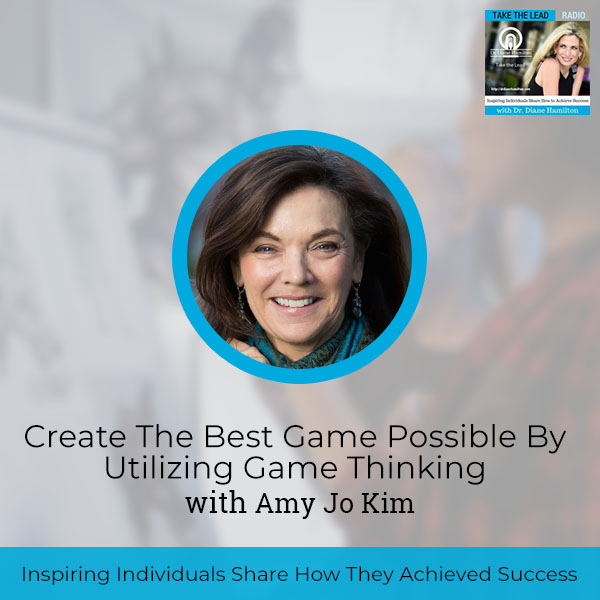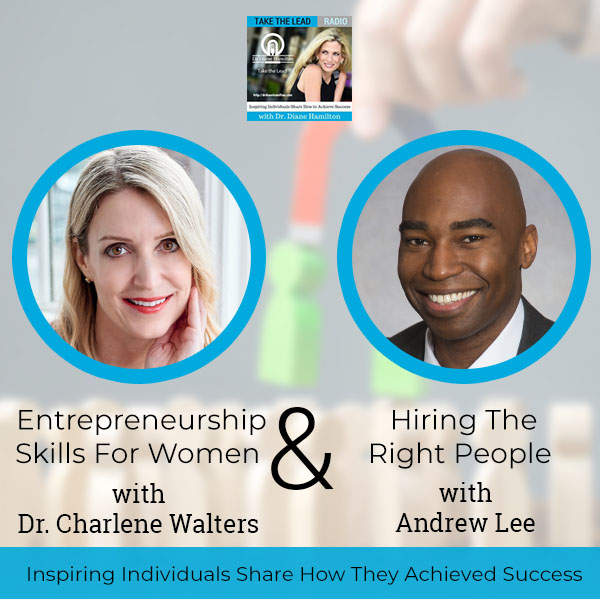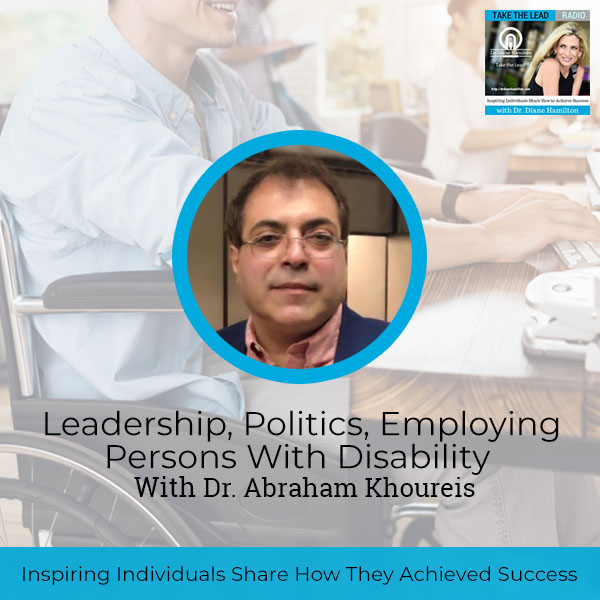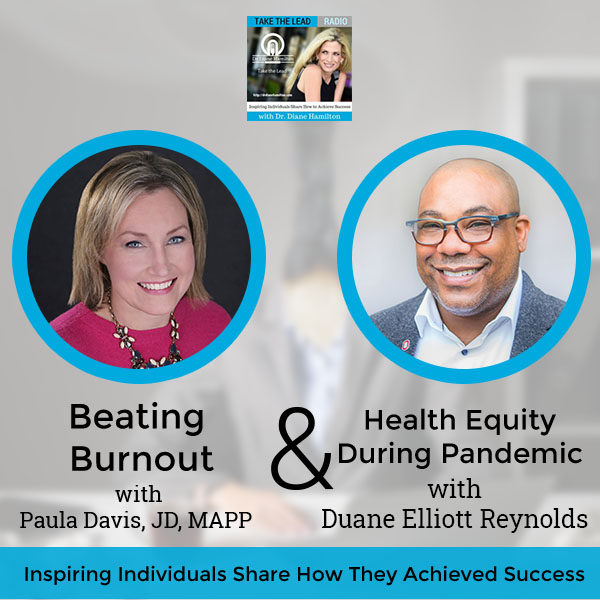Dr. Diane Hamilton's Blog
A Revolution in Hiring and Working with Eva Andres of Juniper Networks
Decision Making – Chapter Reading

Intuitively, we know that curiosity plays a role in our decision-making, but how does that work?
Research presented in 2016 found that curiosity has an impact on decision-making. By piquing people’s curiosity, leaders can have the potential to increase desired behaviors, which can be important for people who might otherwise lack motivation.
In a study by Evan Polman, people were given a choice of two fortune cookies, one plain and one dipped in chocolate. Participants whose curiosity was piqued by being told that the plain cookie contained a fortune specifically about them overwhelmingly chose the plain cookie by 71 percent. In contrast, when participants were told nothing, 80 percent chose the chocolate-dipped cookie.
This tells us that people might need to experience closure when their curiosity has been piqued. The fortune cookie experiment demonstrated that “curiosity-based interventions come at an incredibly small cost and could help steer people toward a variety of positive actions.”
Curious observation can be considered the first step in the decision-making process. Among the things that curiosity puts into motion are questioning, inquiring about things, experimentation, visualization, skepticism, evaluation, identification of different patterns, imaginative thought, logical reasoning, prediction, inference, etc.
Thus, curiosity leads to observations in which we’re able to recognize issues or problems before making decisions. If we feel a sense of dissatisfaction with a situation, through curious observation we can set in motion the process to make decisions that will produce better outcomes.
Perhaps one of the biggest ways that curiosity affects decision-making is that it gives us more choices. By uncovering options, we have a better chance of reaching a more effective solution to the problem at hand.
High performers often must make tough decisions. They maintain their mental acuity in ways such as being voracious readers. In our interview, what stood out for billionaire Naveen Jain was just how much time he spent reading. His curiosity helped him learn about new areas of research or unfamiliar topics. Running a billion-dollar company requires a lot of decision-making. To ensure that he makes good ones, Naveen and leaders like him spend a lot of time reading.
Julian Hayes II in Inc. magazine explained it this way: “Exposing yourself to new ideas and environments is powerful because of its effects on your brain chemistry and outlook on the world which leads to healthier decision-making. At the basis of all of this lies curiosity which is a key driver for innovation along with improving your working memory.”
In Harvard Business Review, Dr. Terri Cooper, principal and chief inclusion officer at Deloitte Consulting LLP, shared insights from what she learned regarding the six signature traits of inclusive leadership. These six signature traits are cultural intelligence, collaboration, commitment, courage, cognizance, and curiosity. As she explained, “Curiosity isn’t passive. It’s very active. Curiosity’s about showing appreciative inquiry, bringing open mindset and true desire to know your people. Leaders who show these traits actively seek the perspective of diverse others in ideation and decision–making.”
It seems that the more curious people are, the more alternatives they’re able to generate when making tough decisions. Some may prefer the simplistic approach (e.g., Do I choose A or B, black or white?). However, those who actively engage their curiosity to generate more alternatives always seem to make better, higher quality decisions.
***
In my work, I’m frequently involved in decisions to select speakers and interviewees for my presentations and radio shows. Since I’ve been deliberating on this topic of curiosity, I’ve become increasingly curious about some of my decisions.
Sometimes, I find myself choosing based on biographies alone. Other times, I sense something about a potential guest that makes me want to know more. It could be a photograph, a tagline, or a seemingly insignificant reference in a bio that attracts my attention. I often review several bios that may seem similar, and I end up selecting people based on my gut instinct.
Michelle Tillis Lederman is a perfect example. I chose her to speak at a recent Forbes event. Here’s why.
Michelle was named one of Forbes’ Top 25 Networking Experts. A CEO, she has written three books and been featured in the Wall Street Journal and New York Times. Others I considered had equally as remarkable backgrounds as Michelle. However, in retrospect, I chose her because of gut instinct as much as her impressive résumé. My instinct paid off because she delivered an impactful speech.
This is where experience becomes part of the calculation. Having made hundreds of choices in just as many similar situations, I let my gut decide, and based on my experience, when all else is equal, my gut has served me well.
***
Five Fundamental Steps of Decision-Making
Decision-making, as classically described, involves these five fundamental steps:
Define the problem or issue.
Define the goal or resolution.
Generate alternative solutions that could achieve the goal.
Analyze and decide which alternative best achieves the goal.
Implement the selected alternative.
Sounds simple, right?
However, these five steps do not always lead to a positive outcome. Some major decisions that employed this formula have led to disastrous results.
For example, dating as far back as the 1950s, Ford Motor Company used this process to decide how best to compete with the ever-popular ’57 Chevy. That decision resulted in the Edsel, a car that failed badly in the marketplace.
In the 1980s, Kodak dominated the photography market worldwide. As the age of technology emerged, the company owned the patents to an obscure phenomenon called digital photography. The leaders feared that if they productized and sold the new technology, it would cause a decline in their film sales. Using the classic decision-making process, they decided to forgo the new technology to protect their dominance in film-based photography. Of course, digital photography took over the industry, and if the company had focused more on digitization, chances are it would be thriving today.
In 2000, an obscure video company called Netflix pitched an offer to Blockbuster, the most dominant player in the video rentals market, to become a partner for online rentals. After analyzing the offer using this standard model, Blockbuster’s leaders concluded that there was little or no market for online video rentals. They decided to pass on the offer. What happened? Blockbuster went out of business, and in 2018, Netflix had 124 million paying subscribers in over 190 countries and $7.6 billion in revenue.
So much for this decision-making process as a standalone method for making sound decisions.
Both industry and government organizations have been applying this standard decision-making process since the creation of business schools, yet both are littered with disastrous results. So, what does lead to sound, creative decision-making? And what role, if any, does curiosity play in our decision-making process? Does it aid or hinder it? Is curiosity even a factor? Should it play a more prominent role?
My research says absolutely yes.
For example, curiosity has been used to increase traffic to websites with enticing headlines such as, “You won’t believe what happened next,” or “You’ll be shocked when you see this.” Called “click bait,” these headlines typically aim to exploit our curiosity gap by providing just enough information to make us curious but not enough to satisfy that curiosity without clicking the link. We want to obtain the desired information.
OK, so we know that we can be enticed by our curiosity. But can our curiosity serve as a guide in making better and smarter decisions?
My research again says yes. In fact, scientists say that curiosity is the first step in our decision-making process, though unconsciously so in many cases. Behaviorists use the term “curious observation” to describe this phenomenon.
Researchers have shown that when people are confronted with choices, we are instinctively more curious about some choices than we are about others. They conclude that we should train our curiosity to become more explicit in that process. By making a more conscious effort to apply that to potential choices, we gain more knowledge about each particular option. In that way, we become smarter about selecting or de-selecting those options.
***
Whether consciously or unconsciously, curious observation is inherent in considering alternatives in the decision-making process. Scientists simply encourage us to be more explicit, more conscious in applying this natural phenomenon as part of our decision-making.
We’ve heard the phrase “seize the moment.” In this case, we’re encouraged to seize the curiosity. That curiosity, according to the research, stimulates a variety of other healthy processes including questioning, experimentation, visualization, skepticism, evaluation, identification of different patterns, imaginative thought, logical reasoning, prediction, and inference. Collectively, these curiosity-driven processes are inclined to lead to smarter decisions.
It’s through these things combined, curiosity and observation or curious observation, that we make decision-making easier and more effective.
Don’t be intimidated by what you don’t know. That can be your greatest strength and ensure that you do things differently from everyone else.
***
What about the range of alternatives we allow ourselves to consider in making bold or difficult decisions? Do we have the proper mindset to explore creative, out-of-the-box options in our decision-making process?
Stanford psychologist Carol Dweck researched how our mindset affects our decision-making process, especially when in a competitive or challenging situation requiring new, creative ideas.
In her work, she found that having a fixed mindset (limited ability to be open to new ideas) has a dramatic effect on being able to seek out creative alternatives. When our situation requires us to consider fresh, off-the-wall ideas for solutions, having an open mindset is critical.
As researchers suggest, being open to considering unusual or unheard-of alternatives and vigorously applying curiosity to each of those alternatives are critical. If these two things are happening, we become more effective decision-makers.
In 1968, the USS Pueblo, a spy ship, was fired upon and captured by North Korean military forces. One American was killed, and the remaining crew members were held captive. The incident became a major political crisis for President Lyndon Johnson, and the entire country became fervently anti-Korean, North or South.
About this time, Burger King, the fast-food giant, was scheduled to entertain Korean executives at its national headquarters in hopes of expanding into the Asian market. Burger King leaders had planned to fly the flag of their guests in front of their headquarters for the visit. The local community was in an uproar, and news of the pending visit quickly spread across the United States.
Burger King leaders were confronted with two options. One was the unenviable choice of offending their guests and potentially losing the prospects of expanding into the entire emerging Asian market. The other was losing the loyalty and trust of their local community and customers across the country. Either way, it felt like a lose-lose proposition.
“Would Burger King executives be willing to consider a third, more off-the-wall alternative?” one employee asked. “What if a maintenance truck ‘accidentally’ backed over the flagpole, requiring the flag ceremony to be held indoors, out of the view of the local community?” The executives would profusely apologize for the unusual circumstance to their foreign visitors, he suggested. At the same time, they would protect their reputation and market viability with U.S. customers. And that’s what Burger King did.
In this case, openness to creative alternatives and the curiosity to explore them saved the day.
***
There is, of course, a potential downside in unleashing our curiosity to generate more creative alternatives. We’re talking about that dreaded decision-making roadblock, analysis paralysis.
As we become more curious, we obtain more information. As we obtain more information, we consider more choices. When do we stop the process of exploring and simply decide? Can curiosity help us with that?
Once again, researchers say yes.
We are reminded that curiosity is considered an intrinsic motivation, which means that we derive some fundamental reward from exploring alternatives during the decision-making process.
This is where intuition steps in. That is, the same curiosity that helps us to generate creative alternatives also tells us when we’ve reached a point of diminishing returns and it’s time to decide.
Like curious observation and openness to new ideas, intuition is essential in creative decision-making, especially when we lack knowledge about an unfamiliar topic. Intuition, accompanied by curiosity, helps us know when we have enough knowledge, when to close down the exploration, and when to act.
In What Makes an Effective Executive, Peter Drucker, the famous management guru, says, “Before you can make the right decision, get the knowledge you need.”
Curiosity is the source of that knowledge.

Create The Best Game Possible By Utilizing Game Thinking With Amy Jo Kim
When you play a video game, you have to think to yourself, “Why am I playing this? What makes this game so addicting? Is it the learning curve or the art style?” A lot of research is done behind the scenes when it comes to video game development. Just ask Amy Jo Kim. She worked on notable games such as The Sims and Rock Band. Amy is the CEO, game designer, and startup coach at Game Thinking Academy. She is also the author of Game Thinking. Join your host, Dr. Diane Hamilton, as she talks with Amy on the game thinking mindset. What core design elements are needed in game design and development? How do you access your super fans? Follow the conversation to learn about all things gaming and why it’s alright to fail as long as you are innovating.
Continue reading “Create The Best Game Possible By Utilizing Game Thinking With Amy Jo Kim”

Entrepreneurship Skills For Women With Dr. Charlene Walters And Hiring The Right People With Andrew Lee
More and more women are starting their own businesses, and more women are Developing Entrepreneurship Skills to compete in today’s world. Dr. Diane Hamilton sits down for a conversation with author, speaker, and corporate trainer Dr. Charlene Walters about entrepreneurship. She then talks about what skills women need to develop today and how to develop them. Get ready to explore the business path the right way. This episode is a great starting point to empower women entrepreneurs.
—
Next, we talk all about hiring the right person and what it takes to find the perfect new hire. It’s time to learn how to interview a rock star! Dr. Diane Hamilton talks to Talent Management Leader and TEDx Speaker Andrew Lee as he discusses his thoughts on the interview process. Andrew shares his insights on the things you need to look for during the interview and what tough questions you need to ask during an interview. If you’re a talent acquisition specialist or a business owner getting ready to interview people, this is for you.

Leadership, Politics, Employing Persons With Disability With Dr. Abraham Khoureis
There is a big trend for diversity, inclusivity, and equity in the workplace. Sadly, disabled individuals are not usually included in that conversation. Advocating for employing disabled individuals is Dr. Abraham Khoureis. He is a multi-talented thought leader with knowledge and expertise in a variety of business disciplines and academic settings. He discusses with Dr. Diane Hamilton why business owners should employ disabled persons and how they can make the workplace accommodating for them. When given the right environment, disabled individuals can do so much more. Join this conversation and fully capture inclusivity with Dr. Abe while he also takes us across his works in leadership and his podcast, ‘Keep It Real’ Leadership & Politics.
Continue reading “Leadership, Politics, Employing Persons With Disability With Dr. Abraham Khoureis”

Beating Burnout With Paula Davis, JD, MAPP And Health Equity During Pandemic With Duane Elliott Reynolds
Beating burnout has been a long-time battle for many people in the workforce. Whether you are running your own business or belonging in the corporate world, there are times you will be challenged by stress and overwhelm. Burnout is always seen as a personal, internal battle, but Paula Davis, JD, MAPP aims to change this perspective. Joining Dr. Diane Hamilton, she discusses how this topic must be looked at on a larger scale, particularly with the way leaders manage their teams. Paula also talks about motivating yourself into loving your work even more and, if it comes to it, when is the right time to jump into a brand new career.
—
The COVID-19 pandemic has tested the capabilities and limitations of the healthcare industry. As the vaccination program for this disease rolls out, one unabated challenge of this sector takes the spotlight once more: health equity. Dr. Diane Hamilton sits down with Duane Elliott Reynolds of Just Health Collective to talk about their mission of making the COVID-19 vaccination a lot easier to access for everyone, regardless of age, race, or gender. He explains how the medical solutions for this world-scale problem must never be politicized; instead, they must be focused on the proper education of the public. Duane also shares how they promote diversity in healthcare leadership to increase the representation of minorities and people of color.